Hindu metro plus,pumpkin patch
http://www.thehindu.com/features/metroplus/Food/remembering-apj-abdul-kalam/article7481451.ece
Early this year ,I was inspired to devote time to nurturing my kitchen garden. The greens and the herbs did well but the vegetables were another story altogether. The trials continued with a variety of seeds. One day ,we decided to plant some pumpkin seeds. With little or almost no experience or on how to grow pumpkins ,it was only my enthusiasm that carried me forward. The shoots and leaves dutifully made it’s appearance in a few days. Once a week I continued to spray them with a blend of ginger ,garlic and green chilli paste mixed with a bucket of water. In a month’s time , the creeper had taken over most of the ground space. Thankfully no other seeds had been planted there. A profusion of big mango yellow flowers with pointed petals,all open to the sky burst forth in another week and boy did they look beautiful ! It was at this point that it dawned on me ,that I needed to educate myself further about growing pumpkins. Looking at the large leaves ,spread contentedly ,with the sunny flowers side by side ,the term “pumpkin patch” was so apt ! I could also relate to why so many of the kiddie paraphernalia is named after this particular kind of plant growth. They look absolutely delightful. The first flowers are what I call the test flowers and they may dry out before maturing. That’s just a part of the natural cycle..
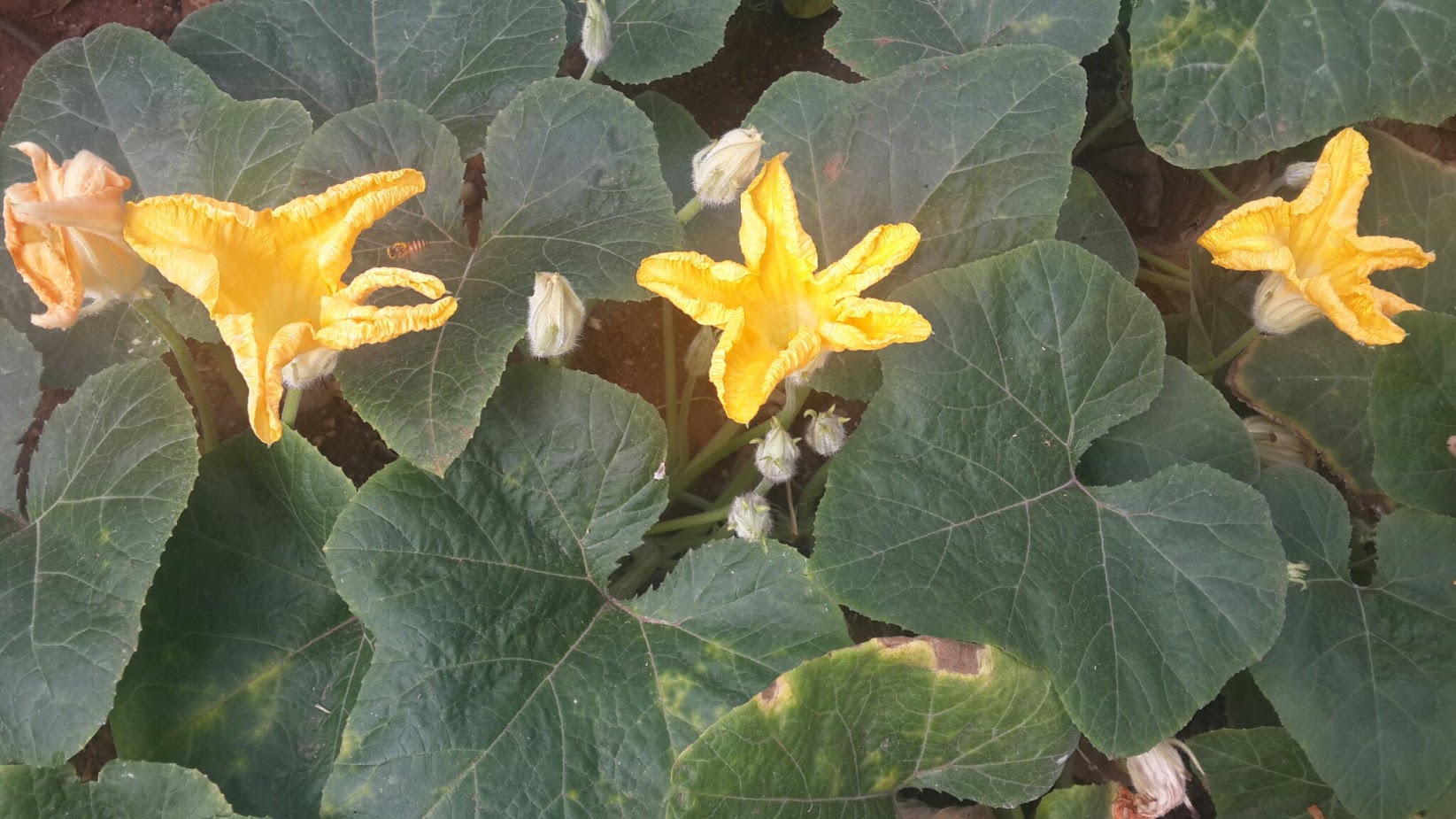
A fruit is defined as that part of the plant that contains many seeds . A pumpkin contains a cup of seeds ,hence it does come under the fruit category. Pumpkins belong to the gourd or otherwise known as ‘ cucurbit ‘ family. They consist of different varieties. The one in my garden is a yellow pumpkin . The skin goes from dark green to a mature yellow and the inside is a darker shade of yellow. In the vernacular it’s called arasinikkai . As I looked up on the information pertaining to growing pumpkins ,I was pleased to learn that I had inadvertently done the right thing. They are best planted in May ,when the soil is not too moist and require plenty of sunshine to grow. What I was actually most curious about ,initially were the pumpkin blossoms. They closely resembled the edible zucchini blossoms in colour and shape. Apparently they are also used for cooking and are equally delicious. These being the first blooms , I was reluctant to harvest them ! What I went on to learn from the gardening websites and books , did lead to a bit of worry. You see unlike most other plants ,the pumpkin flowers are of two kinds. The male flower and the female flower. Due to a dwindling bee and butterfly population ,pollination these days is apparently not a surety unlike in the past. What an alarming thought ! If the flowers did not get pollinated suitably, then they would just wither and die. A lot of gardening sites ,suggested manual pollination . To do something that was nature’s job ,had to be done with great dexterity and utmost care. Just the thought of it was upsetting ,to say the least. It required that we carefully scraped away the pollen from the stamen of the male flower and dusted it into a female flower ,just when it opened. When a female pumpkin flower opens ,it is only for a day and that too sometimes just for a few hours. It is characterized by a bulbous node at the base ,near the stalk. On fertilization this node would then grow into a mature fruit. If not ,the flower will just dry up. The male flowers are the first to bloom and stay open throughout for a few days. Armed with this knowledge , I visited the pumpkin patch several times during the day but sadly there was not a hint of any insect activity !
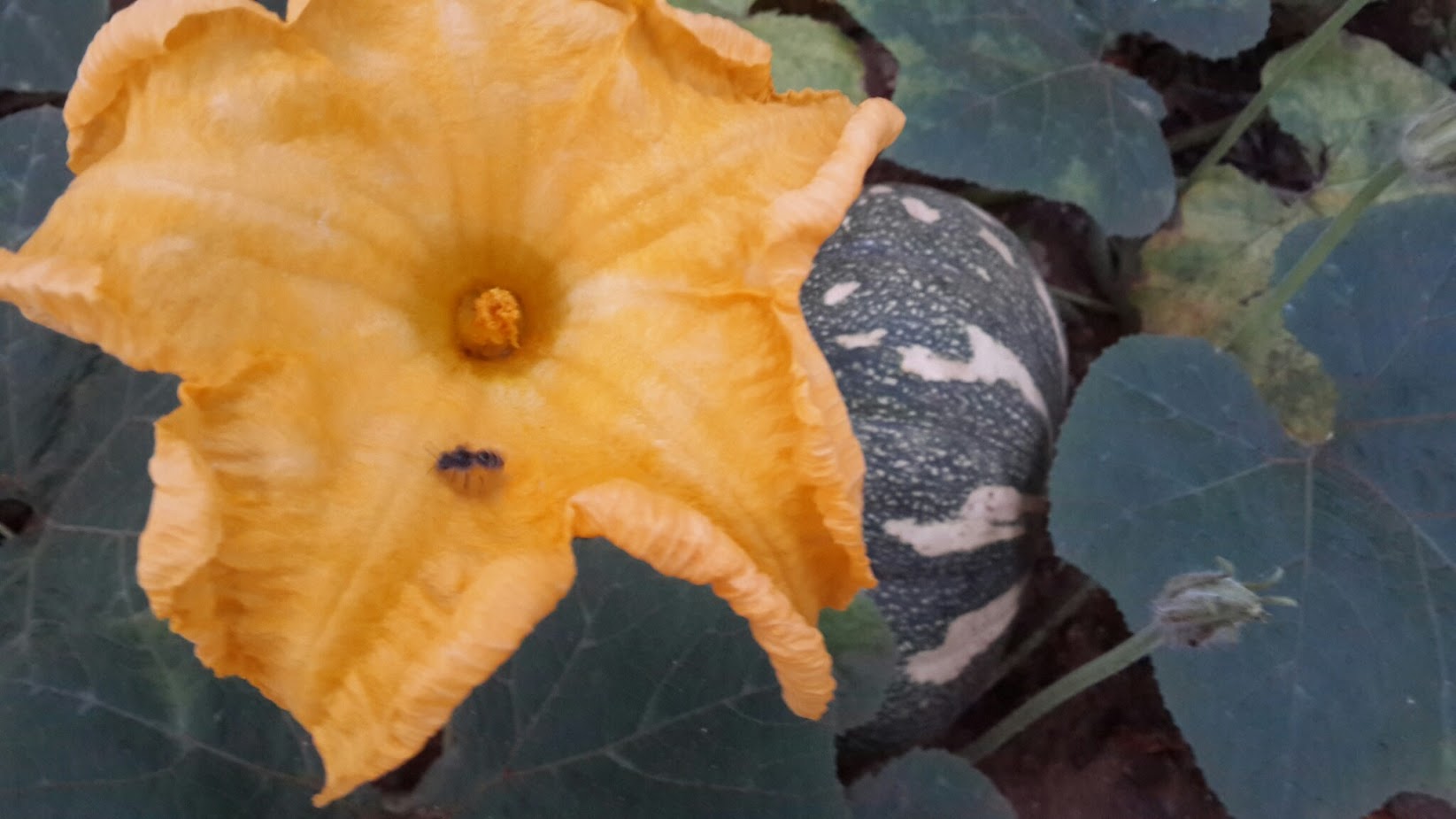
I had steeled myself to try my hand at manual pollination. It was a big deal ,seeing that I was committed to my kitchen garden . It was not only something that I wanted to sustain but also to set an example for my kids . On reaching home after a very early morning workout , I stopped by my pumpkin patch . The sight that met my eyes made my heart sing ! There they were ,by the dozens. Tiny black and yellow bees buzzing away from flower to flower. ‘Busy bee’ is another term that made equally perfect sense ! I was so happy ,that I could have hugged them. in a trance like state , I watched them work ,doing exactly as they were supposed to. The little legs covered with pollen neatly landed into an open female flower. At that moment ,I wished I had the whole world and then some ,to witness the very things that we take for granted. Truly , I was of the belief that natural pollination was a rarity. It is an issue of growing concern.The fact that we as humans contribute very little in our day to the upkeep of our flora and fauna will directly have an impact on the food scene.
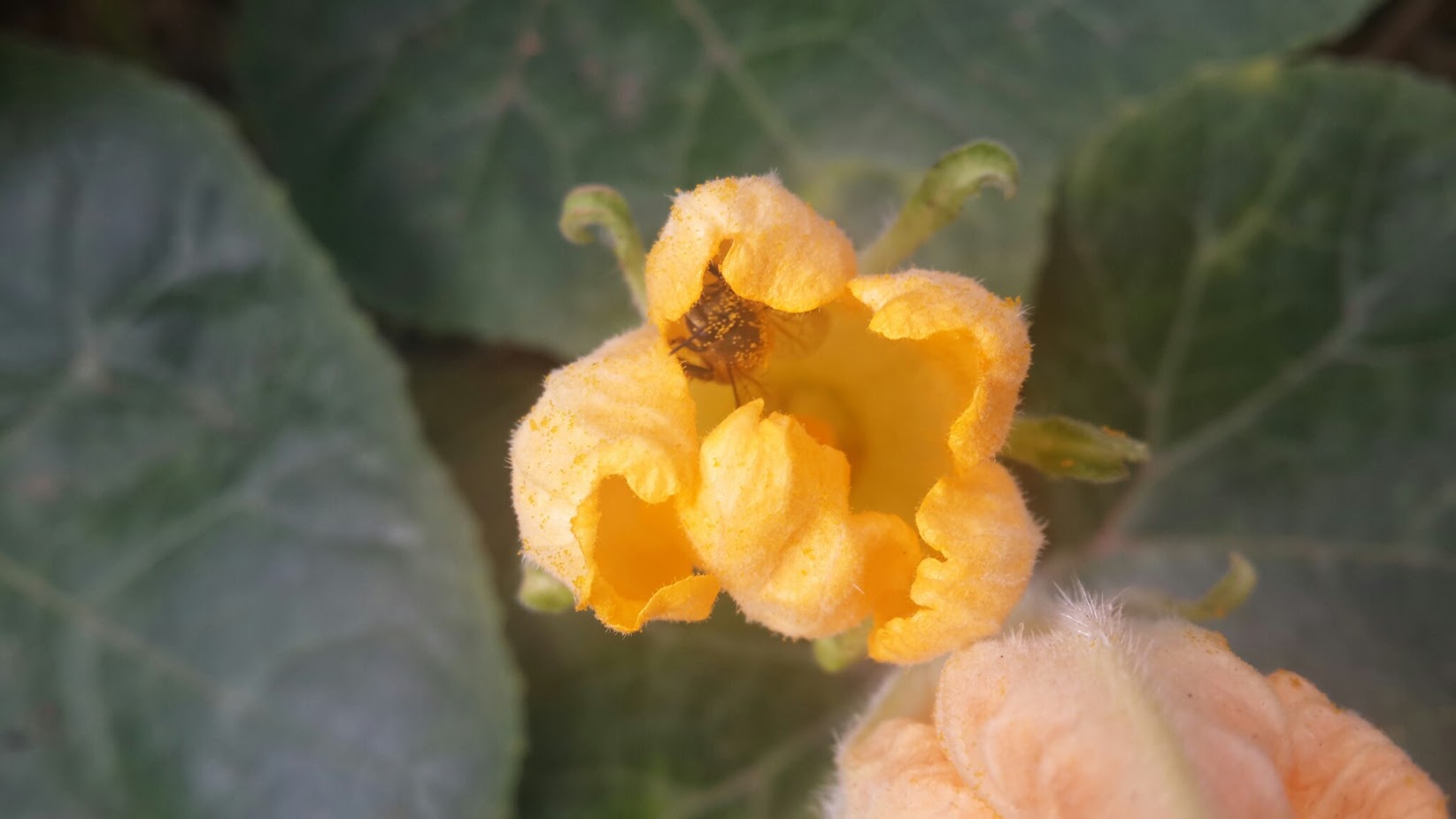
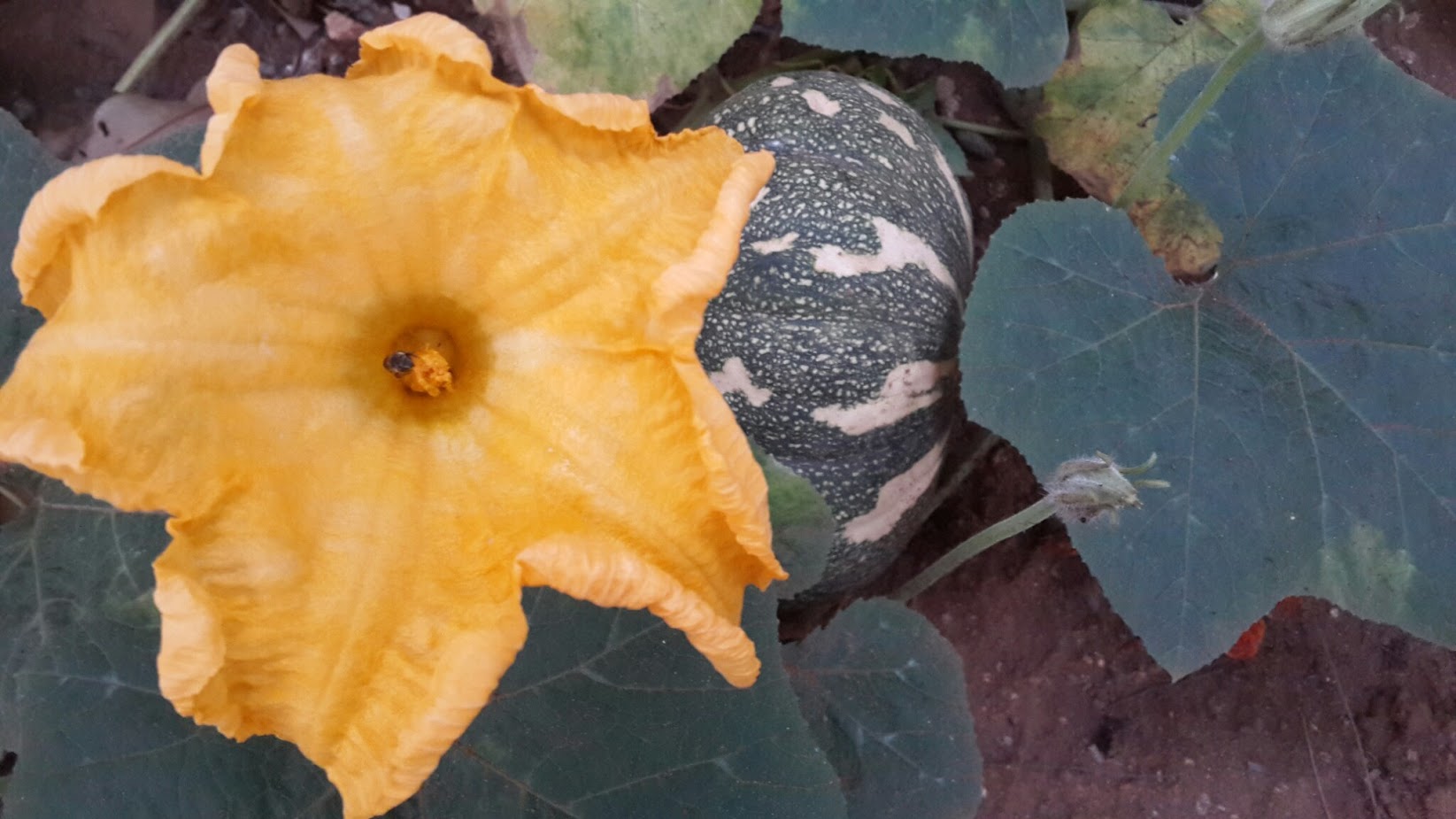
The first pumpkins that I harvested were done with immense gratitude. It was shared first with my garden helpers and then with friends and family. The pumpkin tasted of all the goodness that went into helping it grow and thrive. The colour , the taste , the freshness was truly amazing . We all developed a new respect for this humble gourd. The next time you come across a home grown pumpkin , you will know what it took for the magic to happen.The pumpkins are so versatile and easily adapt itself to many cuisines. The pumpkin in a channa dhal gravy is as tasty as a cinnamon flavoured pumpkin pie. The seeds are super tasty and crunchy,when roasted . Seasoned with a bit of chilli powder and salt ,they are a highly nutritious snack. I often add it to my papaya salad. I have obviously retained some seeds for replanting. As long as they are not a hybrid variety ,they can be washed thoroughly and air dried for a few weeks before storing. It’ s best to plant them again during warmer climes.
I have since ,begun to educate myself more on the natural ways to cultivate a kitchen garden. Pumpkins contain a lot of water . Hence the plants need to be watered deeply. Not frequently but deeply. At least twice a week it needs about about an inch of water around it’s base. The rest of the time ,a mild wetting of the soil is sufficient. They also need to be fed with a lot of mulch and manure once a week . If fed properly the leaves tend to grow quite large and the shade they provide hinders the growth of weeds. I also learned that the fruit must be gently turned ,in order for it to develop well. A mesh or board under the fruit will prevent it from rotting . In my case , I need to safeguard it from the millions of big red ants that swarm my pumpkin patch. It needs a soil which has adequate drainage. If the water stagnates, that spells disaster for the pumpkin patch. To check if the fruit has ripened ,one needs to do a fingernail test on the skin. The skin should be hardened enough to not form a dent when pressed with the finger nail. If it’s picked too early ,the fruit will spoil in no time. The heavy pumpkin should never be picked up by the stem , it may snap off ,leading to a wasted fruit. When harvesting ,it must be done so with the help of shears . Always cut it with a long bit of stalk remaining on the fruit. This increases the storage time of the pumpkin. In a city like ours , an uncut pumpkin can be stored for a few weeks. In cooler parts of the world ,they are stored for a few months. Immediately after harvesting ,a good sun bath is said to improve the colour and taste of the pumpkin. So ,it can be left in direct sunlight for a few hours ,on a table ,before storing it away.That’s something I missed doing for my first harvest but will definitely do for the second lot of fruit. A pumpkin patch ,contrary to popular belief does not require one large space. It can be literally maneuvered to grow in the background ,along the wall or even over it.
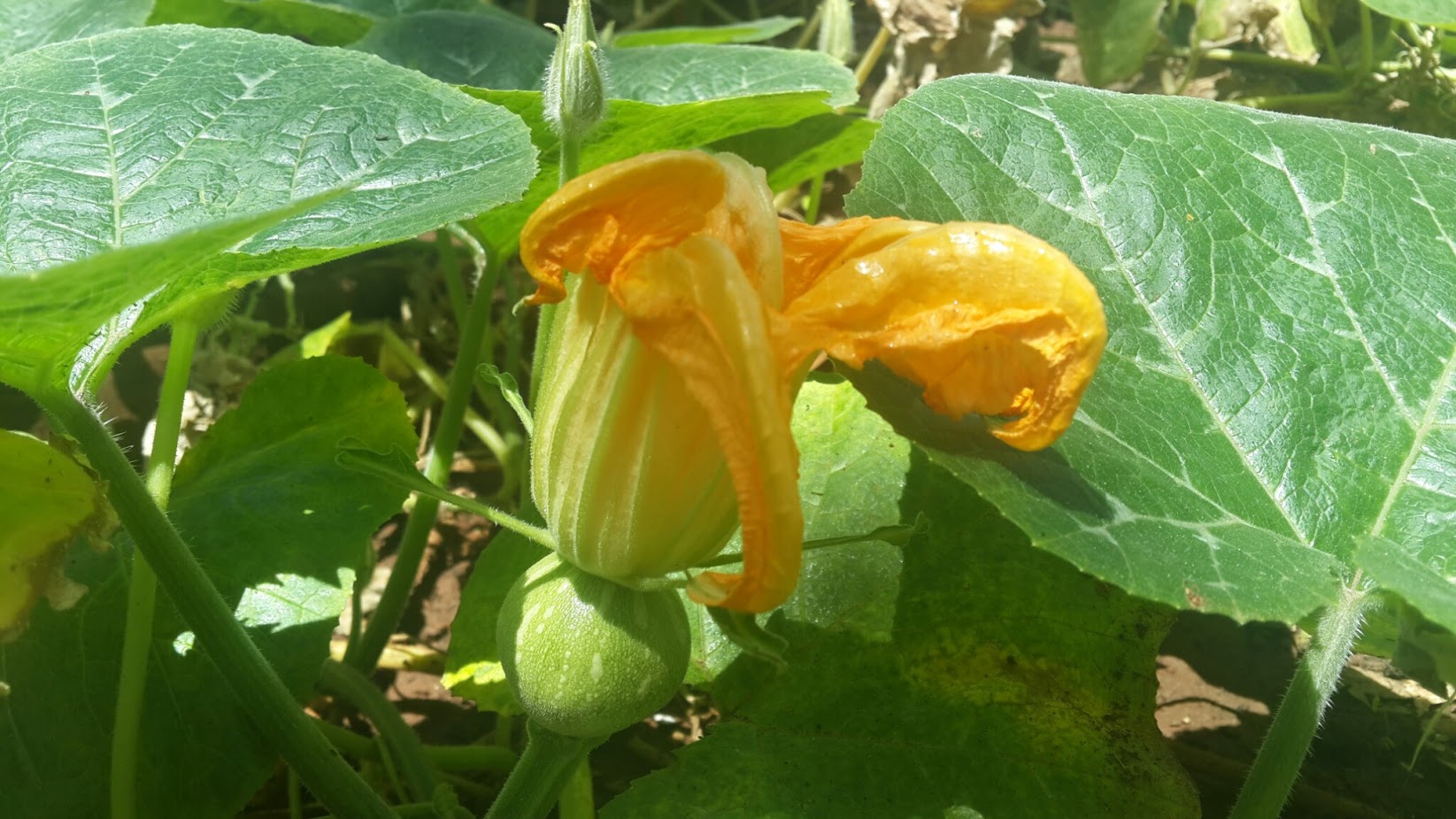
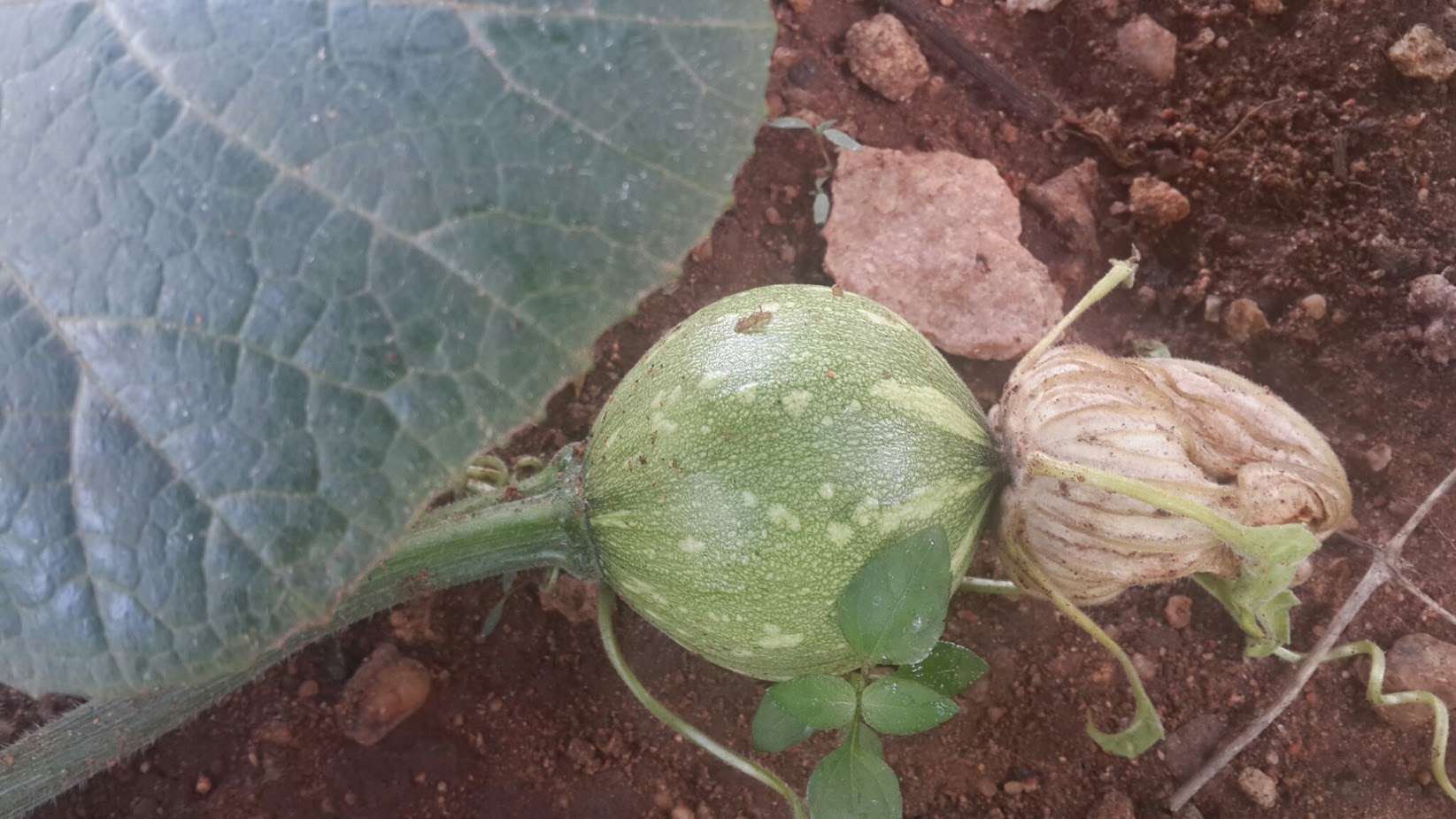
As I write this , round two of the pumpkin cycle is well underway . The flowers are open , the bees and the occasional butterfly are flitting about and the first lot of fruit are making an appearance. This has been more than an educational experience.It has added another element of that emotional connect with food. As this is just a day after hearing of the passing away of our beloved teacher first , President next , Dr. APJ … it means more to me that I have embarked on this journey of self sustenance. It was he who has remarked many times that if every Indian were to plant one fruit bearing tree,the country would save itself from starvation… this article is deeply connected to his memory !
Now , I know that by keeping a close watch ,the male flowers can be picked once the pollination is done. That can make a delicious dish by itself. Another way to get help for your kitchen garden is by planting some flowers alongside the fruit and veg. This is an added attraction for our little flying helpers and adds to the beauty of the space as well. I have done just that . Soon I will have big cheerful sunflowers bobbing away next to the fat round pumpkins. I cannot wait to share the next bounty. My hearty Mexican pumpkin soup ,garnished with crisp tortilla chips and fresh coriander awaits !
Click here for my special (home grown)pumpkin soup

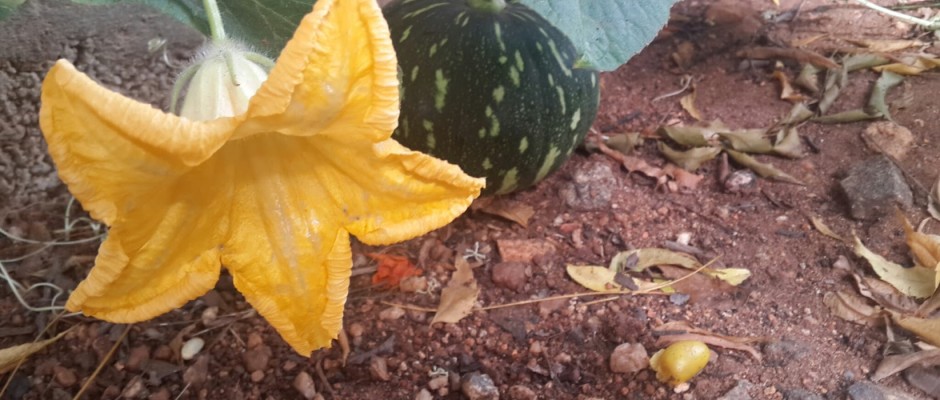







No comments yet.